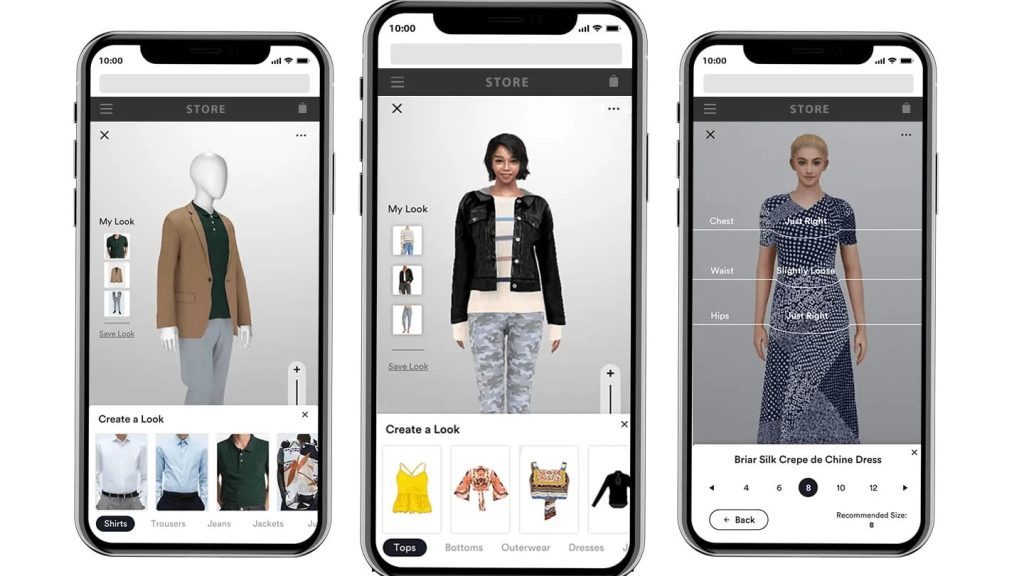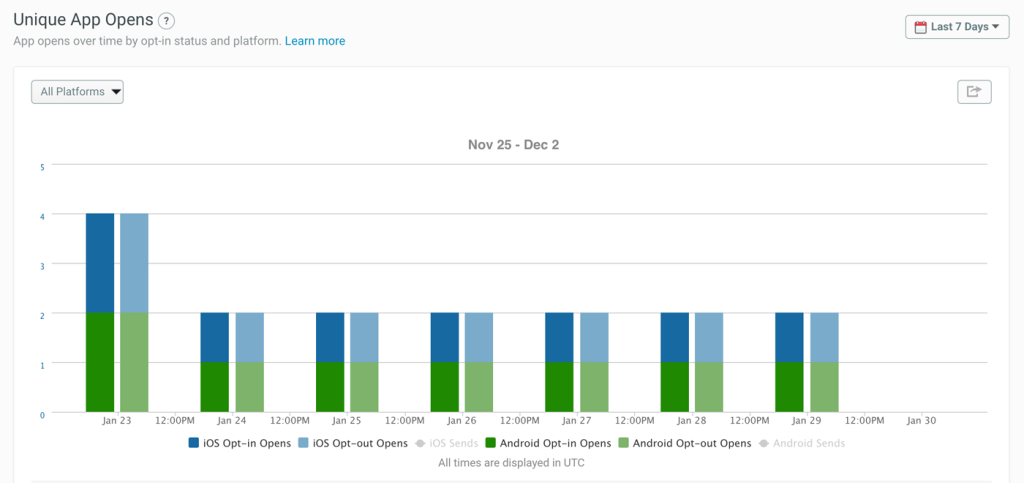Mobile marketing refers to the multi-channel digital marketing strategy designed to reach a target audience on their smartphones, tablets, and other mobile devices, through websites, email, social media, and apps.
It’s a way for businesses to connect with customers in a personalized, time- and location-sensitive manner.
Is your business struggling to connect with customers on mobile devices?
With smartphone usage skyrocketing, failing to optimize your mobile marketing strategy means missing out on a vast audience.
Ineffective mobile campaigns can lead to plummeting engagement rates, lost sales, and a rapidly shrinking market share.
But don’t panic – by embracing cutting-edge mobile marketing trends and tactics for 2024, you can transform your mobile presence into a powerful engine for growth and customer loyalty.
Unlocking Mobile Marketing Success in 2024
As we approach 2024, the mobile marketing landscape is evolving at breakneck speed. Businesses that stay ahead of the curve can gain a significant competitive edge in this dynamic digital ecosystem.
Let’s explore the groundbreaking trends and tactics that will define mobile marketing in the coming year, equipping marketers with actionable insights to elevate their strategies and drive success.
1. AI-Powered Personalization: The Future of Customer Engagement
Artificial Intelligence (AI) is revolutionizing mobile marketing by enabling hyper-personalized experiences at scale.
In 2024, we’ll see AI-driven tools become even more sophisticated, allowing marketers to create truly individualized customer journeys.

Key aspects:
- Predictive analytics for user behavior and preferences
- Real-time content adaptation
- AI-powered chatbots and virtual assistants
- Personalized product recommendations
- Optimized ad delivery for maximum impact and ROI
Implementing AI-powered personalization can lead to significantly higher engagement rates, improved customer satisfaction, and increased conversions.
2. Voice Search Optimization: Speaking the Language of Your Customers
With the proliferation of voice-activated devices and digital assistants, optimizing for voice search is no longer optional.
In 2024, successful mobile marketers will focus on making their content voice-search friendly.
Key strategies:
- Focus on long-tail, conversational keywords
- Create FAQ-style content to address common voice queries
- Optimize for featured snippets and position zero
- Ensure local SEO is optimized for “near me” voice searches
- Develop voice apps or skills for popular platforms
By optimizing for voice search, businesses can capture a growing segment of users who prefer this hands-free, convenient method of finding information and making purchases.
3. Augmented Reality (AR): Blending Digital and Physical Worlds
AR is set to transform mobile marketing by offering immersive, interactive experiences that bridge the gap between digital and physical realities.

AR applications in mobile marketing:
- Virtual try-ons for fashion and beauty products
- Interactive product visualization for furniture and home decor
- AR-powered navigation and information in retail spaces
- Gamified brand experiences and scavenger hunts
- Educational content and how-to guides enhanced with AR
Brands that leverage AR can provide unique, memorable experiences that drive engagement and boost conversions.
4. 5G Technology: Unlocking New Possibilities

The widespread adoption of 5G networks will open up new avenues for mobile marketing, enabling faster, more responsive, and more immersive experiences.
Opportunities with 5G:
- High-quality, data-intensive content (4K video, 3D experiences)
- Real-time, location-based marketing strategies
- Enhanced IoT integration for seamless omnichannel experiences
- Edge computing for faster, more responsive mobile applications
- Improved AR and VR experiences with lower latency
Marketers who harness the power of 5G can create richer, more engaging mobile experiences that captivate their audience.
5. Privacy-First Marketing: Building Trust in a Cookie less World
With increasing privacy regulations and the phasing out of third-party cookies, mobile marketers must adapt their strategies to prioritize user privacy while still delivering personalized experiences.
Key focus areas:
- Transparent data collection and usage policies
- First-party data strategies
- Contextual advertising approaches
- Privacy-enhancing technologies (PETs)
- User-controlled personalization options
Brands that prioritize privacy and transparency can build stronger, more trusting relationships with their customers, leading to increased loyalty and engagement.
6. Mobile Video Marketing: Short-Form Content Dominates
Video content continues to reign supreme in mobile marketing, with short-form videos becoming increasingly popular across various platforms.
Effective mobile video strategies:
- Create engaging, vertical video content optimized for mobile viewing
- Leverage platforms like Instagram Reels, and YouTube Shorts
- Use live streaming to connect with audiences in real-time
- Incorporate interactive elements like polls and quizzes
- Optimize video content for silent viewing with captions and text overlays

Brands that master the art of short-form video can capture audience attention quickly and effectively, driving engagement and brand awareness.
7. Mobile Commerce and Social Shopping: Seamless Buying Experiences
The lines between social media, mobile apps, and e-commerce are blurring, creating new opportunities for frictionless mobile shopping experiences.
Key trends in mobile commerce:
- One-click purchasing and mobile wallet integration
- Social commerce features (e.g., Instagram Shopping, Facebook Shops)
- Shoppable video content
- Augmented reality product visualization
- Voice-activated shopping
By optimizing the mobile shopping experience, brands can reduce cart abandonment rates and drive higher conversion rates.
Progressive Web Apps (PWAs): Bridging the Gap Between Web and Mobile

Progressive Web Apps offer a way to deliver app-like experiences through the web, combining the best of both worlds for users and marketers alike.
Benefits of PWAs:
- Faster loading times and improved performance
- Offline functionality
- Push notifications for web users
- Reduced friction in the user journey (no app store downloads)
- Cost-effective development compared to native apps
By implementing PWAs, brands can provide a seamless, app-like experience to their users without the barriers of traditional app installation.
Blockchain and NFTs: New Frontiers in Mobile Marketing
Blockchain technology and Non-Fungible Tokens (NFTs) are opening up new possibilities for customer engagement and loyalty programs in mobile marketing.
Potential applications:
- NFT-based loyalty programs and exclusive content
- Blockchain-verified authenticity for luxury goods
- Decentralized social media platforms
- Tokenized rewards and incentives
- Transparent supply chain information for conscious consumers
While still emerging, these technologies offer innovative ways for brands to create unique value propositions and engage with tech-savvy audiences.
Measuring Success in Mobile Marketing: Key Metrics and Analytics
In the fast-paced world of mobile marketing, measuring and analyzing your performance is crucial for ongoing success. By tracking the right metrics, you can optimize your strategies, allocate resources effectively, and demonstrate ROI to stakeholders.
Key metrics to measure mobile marketing success:
Mobile Website Performance

- Monitor mobile site load times
- Track mobile bounce rates and time on site
- Measure mobile conversion rates
Engagement Metrics
- Push notification open rates
- App opens and session length
- In-app actions and feature usage
- Social media engagement on mobile
Mobile Conversion Rates
- Mobile-driven purchases or lead generations
- Mobile cart abandonment rates
- Cross-device conversion attribution
Location-Based Metrics
- Foot traffic to physical stores from mobile campaigns
- Geofence engagement rates
- Local search rankings and “near me” query performance
Mobile Ad Performance

- Click-through rates (CTR) for mobile ads
- Cost per click (CPC) and cost per acquisition (CPA)
- Video view rates and completion rates on mobile
User Acquisition Costs
- Return on ad spend (ROAS) for mobile campaigns
- Cost per install (CPI)
- Lifetime value (LTV) of mobile users
Mobile-Specific User Behavior

- Most popular mobile devices and operating systems
- Peak usage times for mobile engagement
- User flow and navigation patterns on mobile
Voice and Chatbot Metrics
- Successful voice query rates
- Chatbot engagement and resolution rates
- User satisfaction scores for voice and chat interactions
AR and Interactive Content Performance
- AR feature usage rates
- Time spent with AR content
- Conversion rates from AR interactions
Tools and Techniques for Mobile Marketing Analytics:
- Mobile analytics platforms (e.g., Google Analytics for Mobile, Firebase)
- App store analytics (Apple App Store Connect, Google Play Console)
- A/B testing tools for mobile optimization
- Customer feedback and surveys optimized for mobile
Best Practices for Measuring Mobile Marketing Success:
- Set Clear Goals and KPIs: Align your metrics with your overall business objectives.
- Use Attribution Models: Implement multi-touch attribution to understand the customer journey across devices.

- Segment Your Data: Analyze performance across different user segments, devices, and locations.
- Monitor Competitors: Use competitive intelligence tools to benchmark your mobile performance.
- Regularly Review and Adjust: Continuously analyze your data and adjust your strategies based on insights.
- Combine Quantitative and Qualitative Data: Use both hard metrics and user feedback to get a complete picture.
- Ensure Data Privacy Compliance: Adhere to data protection regulations when collecting and analyzing user data.
Conclusion: Embracing the Mobile-First Future
As we look ahead to 2024, it’s clear that mobile marketing will continue to be a critical component of successful digital strategies.
By embracing these trends and tactics, businesses can create more engaging, personalized, and effective mobile marketing campaigns that resonate with their target audience.
The key to success in mobile marketing is to stay agile and continually adapt to new technologies and consumer behaviors.
Keep experimenting, analyzing your results, and refining your approach to stay ahead of the curve in the ever-evolving mobile landscape.
Are you ready to take your mobile marketing to the next level in 2024? Start implementing these strategies today and watch your mobile engagement and conversions soar!
Want to learn more about how to create effective mobile marketing campaigns? Contact LalitWebWorld to get started and take the first step towards mobile marketing success.



